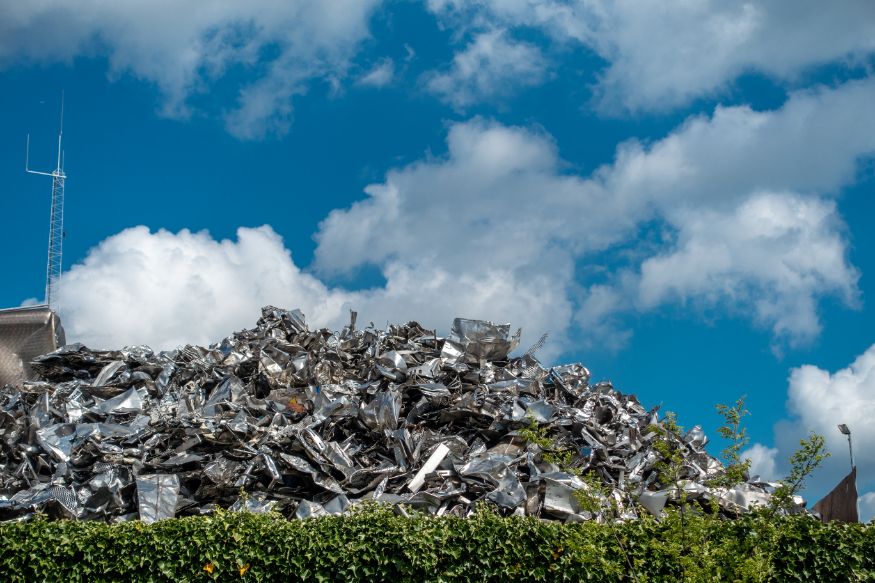Stainless Steel Fabrication for a Clean and Green Future
The world is in the midst of an eco-conscious revolution, pushing for sustainable solutions across all industries. One silent hero in this green narrative is stainless steel. Renowned for its durability and stain resistance, stainless steel has silently woven itself into the fabric of a clean, green footprint. From industrial manufacturing to the end product that lines our homes and hospitals, stainless steel has proven itself as a pillar of sustainable technology.
Often overlooked in discussions of eco-friendly materials, stainless steel offers a unique combination of durability, hygiene, and recyclability that makes it a champion for clean and green applications.
The Versatility of Stainless Steel
Sleek, sturdy, and resistant, stainless steel encapsulates versatility, making it a favourite across numerous industries. Be it the towering medical equipment that promises sterilisation without harbour of germs, or the blade of a wind turbine soaring for a sustainable tomorrow, the applications of stainless steel are as varied as they are vast.
Stainless steel’s legendary resilience is also a major green advantage. A study by the International Stainless Steel Forum (ISSF) found that stainless steel buildings can last for over 100 years with minimal maintenance. This translates to a significant reduction in demolitions and the associated environmental impact of producing new building materials.
Stainless Steel in Everyday Objects

Beyond its industrial applications, stainless steel is present in the very bones of our homes. It lines our kitchens, and bathroom fixtures, and even forms the framework for modern, eco-friendly transportation. Its ability to withstand corrosion makes it an invaluable asset for items that endure in the quest for minimal environmental impact.
Industrial Applications
In the industrial landscape, stainless steel shines as a material of choice in the manufacturing of renewable energy technology, water purification systems, and even the scaffolding for skyscrapers designed to minimise their environmental footprint.
The Fabrication Process
Stainless steel doesn’t achieve its superlative properties on its own. It undergoes a meticulous fabrication process that elevates it to the high standard the world has come to expect.
Precision is Key
From the initial stage of cutting, through forming, and final welding, precision is the watchword in the fabrication industry. This precision not only ensures the high quality of the final product but also significantly reduces waste, aligning with sustainable manufacturing practices.
Joining Techniques
Welding and other joining techniques used in stainless steel fabrication, demand finesse, and they deliver not only in terms of strength but in making stainless steel a formidable opponent to the alternative materials, not just in performance but also in the environmental stakes.
Environmental Impact of Stainless Steel

Recycling is another area where stainless steel shines. According to the American Iron and Steel Institute (AISI), over 68% of stainless steel is recycled at the end of its lifecycle, making it one of the most recycled materials globally. This closed-loop system dramatically reduces reliance on virgin resources and minimises energy consumption during production.
The ability for stainless steel to be recycled indefinitely without the loss of quality means stainless steel is not just about current sustainability but is a building block for a future where a circular economy dominates.
Recyclability and Longevity
When we talk about the lifespan of stainless steel products measured in decades, it’s a testament to the reduced need for replacement and the consequential reduced waste. This longevity plants stainless steel firmly in the bastion of ‘green’ materials, as it’s often the last material standing.
Low Life-cycle Emissions
Stainless steel boasts low life-cycle emissions, a vital factor in curbing environmental degradation. Compared to materials with fungicides, paints, or coatings that pose harmful emissions, stainless steel stands out for being the product and the protector, all in one.
Case Studies
Looking at real-world examples, the success stories of sustainable fabrication shine. By employing stainless steel, companies have drastically cut down on their carbon footprints, not just in production but across the entire lifecycle of the product.
Powering a Cleaner Fuelling Future
In the clean energy sector, stainless steel is a key player in the manufacturing of fuel cells. These fuel cells are deemed the cornerstones of a future where clean energy powers our transportation, cutting down on emissions that choke our planet.
Beyond the Kitchen

While stainless steel is a familiar sight in our kitchens, its applications for a greener future extend far beyond. Here are some exciting areas where stainless steel fabrication is making a positive impact:
- Renewable Energy: Solar, wind, and geothermal power plants all utilise stainless steel components due to its resistance to corrosion and extreme weather conditions. A 2023 report by Grand View Research predicts the global market for renewable energy to reach $1.9 trillion USD by 2030. Stainless steel fabrication will play a crucial role in supporting this growth.
- Water Treatment: Stainless steel’s hygienic properties make it ideal for pipes, tanks, and other components in water treatment plants. This ensures clean water delivery while minimising the risk of contamination. The World Health Organisation (WHO) estimates that 1.8 billion people globally use a drinking water source contaminated with faecal matter. Stainless steel plays a vital role in safeguarding public health through clean water infrastructure.
- Sustainable Transportation: Lightweight, high-strength stainless steel is increasingly used in trains, buses, and even some electric vehicle components. This reduces overall vehicle weight, leading to improved fuel efficiency and lower emissions.
Future of Stainless Steel in Green Technology
The horizon for stainless steel is clear, and it is a green one. Innovations in stainless steel production and fabrication technologies are paving the way for an even more environmentally friendly future.
Sustainable Manufacturing Techniques
The push is on for more sustainable manufacturing techniques that reduce energy consumption and waste whilst driving the industry towards a closed-loop system where stainless steel products are recycled back into the process.
Collaborations for a Sustainable Tomorrow
The greatest strides are made when industries work in tandem towards a common goal. Collaborations between companies and countries on stainless steel sustainability can break new ground and set higher standards for eco-friendly manufacturing practices.
Conclusion
The future of stainless steel fabrication lies in innovation. New techniques like laser cutting and waterjet cutting minimise waste and improve precision. Additionally, research into using recycled content in the production of new stainless steel promises to further enhance its environmental credentials.
By embracing these advancements, the stainless steel fabrication industry can solidify its position as a key player in building a clean and green future.
A Call to Action
To all those vested in the green future, stainless steel acts as a catalyst for change, an igniter of innovation. It beckons us to explore further, to create more sustainable products and processes. In the intersection between sustainability and stainless steel, lies endless potential. It’s time to engage, fabricate, and build our future on a foundation that’s not just strong, but also sustainable.
